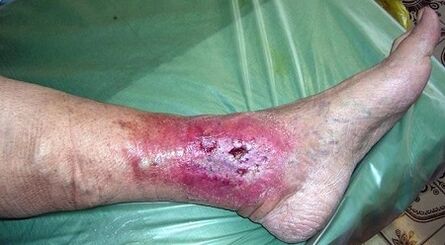Varicosis vases of the lower ends are an extremely urgent problem of modernity.In order to understand why the disease develops and how it can be treated, it is necessary to remember the anatomical characteristics of the structure of the circulatory system.
What is the varicose veins of the surface veins?
The main task of the venous system of the legs is to transport the blood from the bottom up.To do this, there are valves in the veins: they direct the blood from the legs to the heart.
Furthermore, for correct operation, ships are divided into 3 groups:
- Superficial.They are located near the skin and are often subject to varicose expansion.
- Deep.This group of ships runs between muscle fibers.
- Other.Their task is to guarantee the connection between surface and deep pots.
Why do the varicose veins of the surface veins develop?

Ships can increase in diameter several times over time.
This process is influenced by factors such as:
- Inheritance.But only genetic background is not enough for the development of the pathology.A responsible attitude towards the prevention of the disease is able to prevent the development of varicose veins.
- Pregnancy, childbirth, menopause or intake of hormonal drugs.Often, the formation of disease in women is the basis of these causes.
- Passive lifestyle.The less the veal muscles work, the greater the possibility that varicose disease develop.
How do the varicose veins of the surface veins manifest themselves?
The symptoms of the disease can be divided into external (cosmetics) and basic.The external manifestations of the varicose veins of the surface veins include varicose nodes, winding veins on the legs, a change in the skin (in particular pigmentation and dryness in the ankles region: the skin here is sensitive and thin).
The main symptoms include:
- Pain and sensations of "heavy legs"
- Swelling.Sometimes the swelling is so pronounced that the usual size of the shoes becomes small.
- Feet with varicose veins itch.
- Vienna on the pulsate leg.
What could be dangerous varicose veins of the surface veins?

The danger is not in the disease itself, but in its complications.
With varicose veins, the chances of developing blood clots in the pots increase several times.If the blood clot formed in the veins of the legs and detached from the venous wall, then with a bloodstream, it can easily enter the lung vessels.
The blocking of the lung artery often causes death.In addition, trophic ulcers are often formed on ankles.In this case, the infection of infection leads to unpleasant consequences (suppuration, sepsis).
How to treat the varicose veins of the surface veins?
Extended veins are not subject to restoration.In order to establish blood circulation, the removal of the radical vessels is necessary.Fortunately, today it is not difficult to remove expanded surface veins.
For these purposes, laser and radio frequenice energy are used.In the removal process, the patient remains conscious and feels nothing (this is possible through the use of local anesthesia).In addition, immediately after the operation you can go home and these methods leave no traces of the procedure.
In addition to the surgery, good tablets of varicose veins, sclerotherapy, cream and legs are used, as well as traditional medicine recipes.Among these methods, it is worth highlighting sclerotherapy, as an innovative way of fighting initial varicose veins.With it, it is possible to act on small veins and varicosis capillaries.
The varicose veins of the surface veins can and must be prevented.To do this, move actively, eat correctly and do not forget to visit a phlebologist 2 times a year for a planned exam and a diagnosis of the status of the legs of the legs.
























